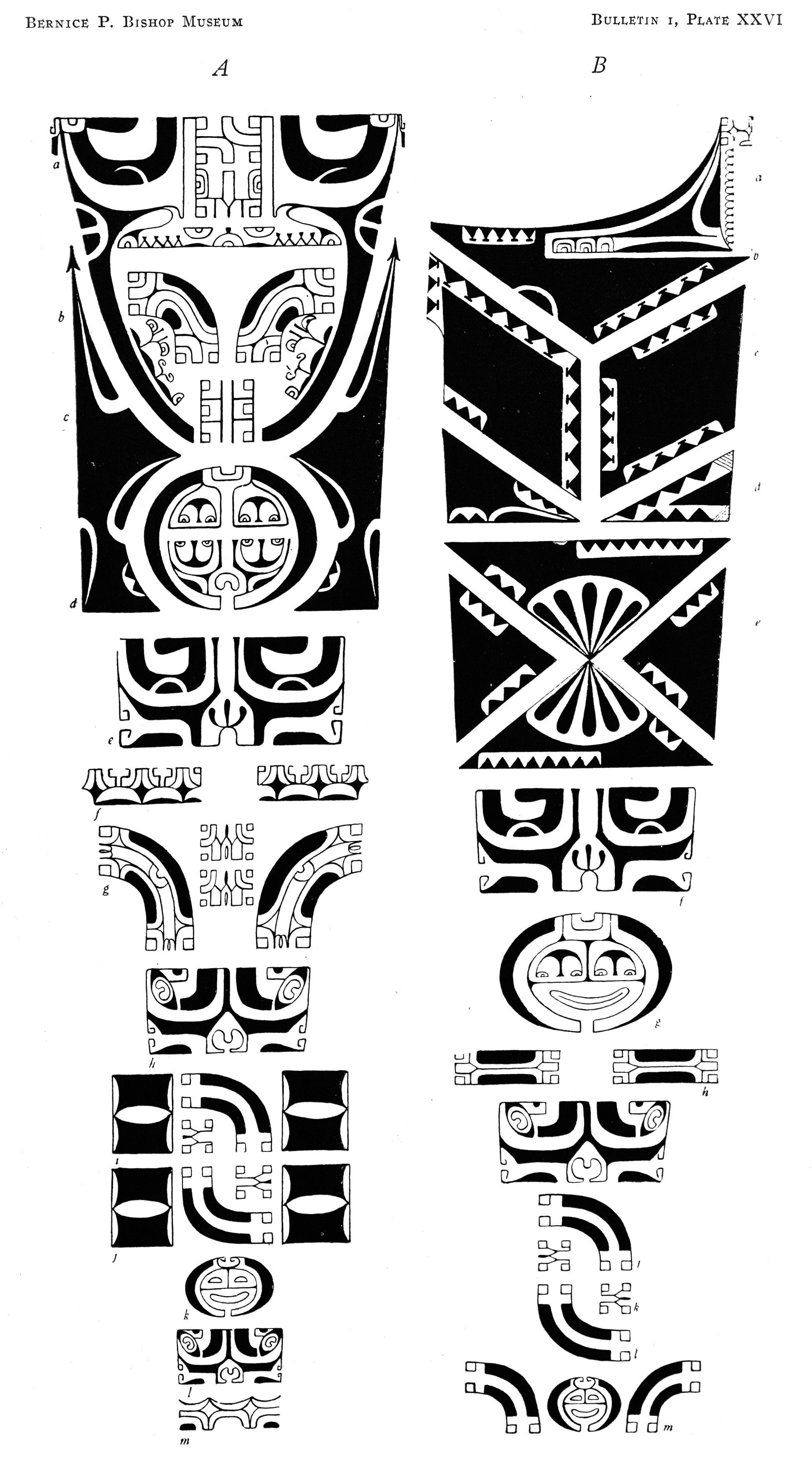Marquesan tattooing was among the most spectacular practices of the art form in Polynesia. In many Polynesian islands, tattooing was restricted to certain parts of the body—the legs and buttocks, the back, sometimes the face. But in the Marquesas, the entire body was often tattooed—even the eyelids, the tongue, and the palms of the hands. Nineteenth-century missionaries, however, forbade the artform, and in the early twentieth century tattooing was no longer openly practiced in the islands.
Enter Willowdean Handy, who in 1920 traveled to the Marquesas with her husband, E. S. Craighill Handy, an anthropologist with the Bayard Dominick Expedition. Although only a “volunteer,” Willowdean ended up writing one of the most important publications of the entire expedition: a seminal study of Marquesan tattooing, based on her determination to seek out examples and the willingness of Marquesans to share them. The book, a slim little thing, was principally given over to Willowdean’s wonderful drawings of the designs. Today, her book is still used as a reference for tattoo artists in the Marquesas.
